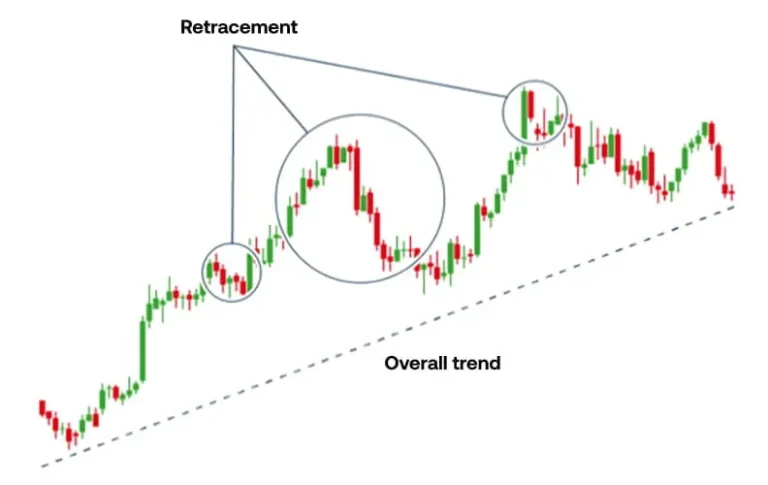Copy trading is a strategy where investors automatically replicate the trades of experienced traders. It allows novice traders to benefit from experts' knowledge without extensive market analysis. Typically used by beginners and those seeking passive investment opportunities.
- Main Benefit: Leverage expert knowledge without extensive market experience
- Primary Concern: Reliance on another trader's decisions and potential risks
- Best For: Novice investors and those with limited time for market analysis
- Important Note: Past performance doesn't guarantee future results
Copy Trading: Advantages and Disadvantages
This comprehensive table outlines the key pros and cons of copy trading, helping investors make informed decisions about whether this strategy aligns with their financial goals and risk tolerance.
| Pros | Cons |
|---|---|
| Access to expert trading strategies | Dependency on other traders' decisions |
| Time-saving for busy investors | Limited control over individual trades |
| Potential for passive income | Risk of copying unsuccessful traders |
| Diversification opportunities | Potential for high losses if chosen trader performs poorly |
| Learning opportunity for novice traders | Fees associated with copy trading platforms |
| Ability to start with small capital | Difficulty in selecting the right trader to copy |
| Automated trading process | Lack of personal investment experience |
| Transparency in trader performance | Potential for overreliance on copy trading |
| Reduced emotional trading decisions | Market risks still apply |
| Access to multiple markets and assets | Possible misalignment with personal risk tolerance |
| Ability to adjust position sizes | Limited customization of trading strategies |
| Potential for consistent returns | Delayed execution of trades |
| Social aspect of trading communities | Potential for herd mentality |
| Accessibility for inexperienced traders | Reduced learning curve for personal trading skills |
| Opportunity to follow multiple traders | Complexity in managing multiple copy relationships |
| Potential for higher returns than traditional investments | Possibility of copying traders with unsustainable strategies |
| Ability to pause or stop copying at any time | Difficulty in assessing long-term performance |
| Exposure to professional trading techniques | Potential for copied trader to change strategy unexpectedly |
| Reduced need for constant market monitoring | Limited transparency into trader's decision-making process |
| Potential for geographic diversification | Currency exchange risks in international copying |
| Access to strategies not easily replicable individually | Potential for copied trader to stop trading or leave platform |
| Ability to compare different traders' performances | Risk of choosing a trader with misaligned investment goals |
| Potential for lower transaction costs | Possible lag in trade execution affecting profitability |
| Opportunity to benefit from algorithmic trading | Dependence on the reliability of the copy trading platform |
| Ability to set stop-loss limits | Potential for copied trader to take excessive risks |
| Flexibility to combine copy trading with personal strategies | Difficulty in verifying the authenticity of trader credentials |
| Potential for discovering emerging trading talent | Risk of copying traders during temporary lucky streaks |
| Access to detailed performance analytics | Potential for platform technical issues affecting trades |
| Opportunity to earn as a signal provider | Privacy concerns regarding trading data |
| Potential for reduced trading-related stress | Possible conflicts of interest in trader recommendations |
Copy Trading Market Statistics
This table provides key statistics and market data on the copy trading industry, showcasing its growth, adoption rates, and financial impact.
| Statistical Analysis & Market Data | |
|---|---|
| Global Copy Trading Market Size (2023) | $2.2 billion |
| Projected Market Size by 2028 | $3.77 billion |
| Compound Annual Growth Rate (CAGR) 2023-2028 | 11.4% |
| Number of Copy Trading Users Worldwide (2023) | Approximately 15 million |
| Average Return on Investment for Copy Traders | 8.5% annually |
| Percentage of Retail Traders Using Copy Trading | 23% |
| Most Popular Asset Class for Copy Trading | Forex (62% of copy trades) |
| Average Copy Trading Account Size | $2,500 |
| Percentage of Profitable Copy Traders | 41% |
| Average Time Spent Managing Copy Trading Accounts | 2.5 hours per week |
Copy Trading Technical Requirements
This table outlines the technical specifications and requirements for engaging in copy trading, including platform features and user prerequisites.
| Technical Specifications & Requirements | |
|---|---|
| Minimum Deposit for Copy Trading | $100 - $1,000 (platform dependent) |
| Supported Devices | Desktop, Mobile (iOS and Android) |
| Internet Connection Speed | Minimum 5 Mbps recommended |
| Platform Security | SSL encryption, Two-factor authentication |
| Regulatory Compliance | Varies by region (e.g., FCA, CySEC, ASIC) |
| Minimum Age Requirement | 18 years old (21 in some jurisdictions) |
| Supported Trading Instruments | Forex, Stocks, Cryptocurrencies, Commodities |
| Maximum Number of Copied Traders | Typically 5-20 (platform dependent) |
| Real-time Data Feed | Required for accurate trade replication |
| Risk Management Tools | Stop-loss, Take-profit, Copy limits |
Copy Trading Cost and Value Analysis
This table presents a comprehensive analysis of the costs associated with copy trading and the potential value it offers to investors.
| Cost & Value Analysis | |
|---|---|
| Average Platform Fee | 1-2% of assets under management annually |
| Performance Fee Range | 5-30% of profits (varies by trader) |
| Spread Costs | 0.1-3 pips (depending on asset class) |
| Potential Annual Returns | 5-25% (highly variable) |
| Risk of Capital Loss | Up to 100% of invested capital |
| Time Saved on Research | Estimated 10-20 hours per week |
| Diversification Benefit | Access to multiple strategies and markets |
| Learning Value | High (observing professional traders) |
| Withdrawal Fees | $0-$25 per withdrawal (platform dependent) |
| Potential Tax Implications | Varies by jurisdiction (consult tax advisor) |
Copy Trading vs. Traditional Trading
This table compares copy trading with traditional trading methods, highlighting the key differences, advantages, and disadvantages of each approach.
| Comparative Analysis & Alternatives | |
|---|---|
| Time Investment | Copy Trading: Low | Traditional Trading: High |
| Required Expertise | Copy Trading: Low | Traditional Trading: High |
| Control Over Trades | Copy Trading: Limited | Traditional Trading: Full |
| Diversification Ease | Copy Trading: High | Traditional Trading: Moderate |
| Emotional Detachment | Copy Trading: High | Traditional Trading: Low |
| Learning Curve | Copy Trading: Shallow | Traditional Trading: Steep |
| Potential Returns | Copy Trading: Moderate | Traditional Trading: Variable |
| Risk Level | Copy Trading: Moderate | Traditional Trading: High |
| Transaction Costs | Copy Trading: Higher | Traditional Trading: Lower |
| Flexibility | Copy Trading: Limited | Traditional Trading: High |
Future Outlook of Copy Trading
This table outlines the anticipated trends and developments in the copy trading industry, providing insights into its future direction and potential impacts.
| Future Outlook & Industry Trends | |
|---|---|
| AI Integration | Increased use of AI for trader selection and risk management |
| Market Growth Projection | Expected to reach $5 billion by 2030 |
| Regulatory Changes | Stricter oversight and transparency requirements expected |
| Asset Class Expansion | Inclusion of more alternative assets and ESG-focused strategies |
| Blockchain Integration | Potential for decentralized copy trading platforms |
| Social Trading Features | Enhanced community engagement and collaborative trading |
| Mobile Trading Dominance | Over 80% of copy trades expected via mobile by 2025 |
| Personalization | Advanced algorithms for tailored trader matching |
| Education Focus | Platforms to offer more comprehensive learning resources |
| Emerging Market Growth | Rapid adoption expected in developing economies |







